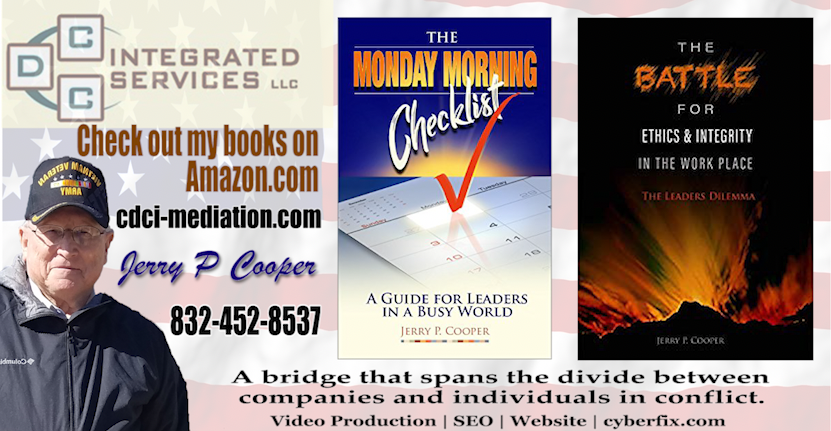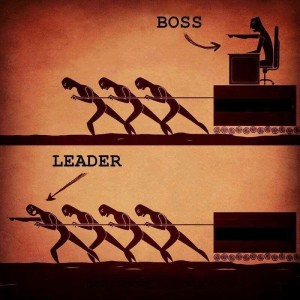Volume 6 | Issue 4
Putting it in contextA message from CDC Integrated Services, LLC
It Takes a Sale
It Takes a Sale
In my book, The Monday Morning Checklist, A Guide for Experienced Leaders in a Busy World, and in previous articles, I talk about the sequence of things, and I do it in the context of those subjects discussed in the book. I start with the basic idea that following plans and doing so consistently is critical; otherwise, you won’t recognize where the stress points are, and will not be able to adjust priorities where or when needed. Adjusting priorities means identifying what must change, and acting to make the changes happen.
Adjusting priorities and taking action on what needs to change impacts organizations and the people who work in those organizations. I was reminded of this last week as I scanned the news on one of the financial news sites I follow. A brief announcement was made about Neiman Marcus successfully renegotiating the due dates for about half of its debt.
In my book, I chose to write about jcpenney because I thought its story was more relevant to what I was writing about in that chapter. At the time I thought about using Neiman Marcus as the basis for the section on Taking Action. I concluded that, given its market segment (it’s not Walmart) and its high levels of debt, I was skeptical it would survive another five years. So I chose not to use the company in my book.
Time may prove me wrong in writing about one versus the other, but I saw Neiman Marcus as a company that had not figured out how to make its traditional model for doing business work in an internet world. Complicating their identity crisis was their decision to go through two leveraged buyouts since the company was spun off in 1987, and with each transformation, the amount of debt increased.
According to the news article I read, Neiman Marcus’s debt, something on the order of $4.5 billion or more, is equal to its total revenue for the most recent fiscal year; and its lenders have granted an extension of up to six years to grow sufficiently to pay off the debt, or at least, pay off a significant portion.
What does this have to do with the subject of this letter? Just that too often these decisions, driven by a combination of ego and necessity, rarely take the future of the employees into account.
Successful companies adjust their priorities because they recognize the need for change to respond to things that impact their overarching strategy. Companies that understand the need for vigilance and develop the ability to react quickly, also make it a practice of selling the changes to their employees.
In the case of Neiman Marcus, I keep coming back to the question of how these twists and turns were sold to the nearly 15,000 employees whose futures are at stake. Selling a range of painful choices to employees is always challenging. And that certainly has to be the case in this instance.
Selling the need for change is something many experienced leaders know has to be done, but the day-to-day pressures a company’s leadership faces often results in the CEO ignoring this need after an initial effort or delegating it to someone else. Selling the need for change and the adjustment of priorities that accompanies change is time-consuming, and often have many moving parts.
Those tasked with explaining what it all means can feel like that person in the story of a man leading a blind man up to an elephant, and by touch, trying to explain to the blind man what the elephant looks like. To the blind man, the explanation of the parts will never make sense because he does not know what an elephant’s trunk looks like; never mind the other part of the elephant.
In modern organizations, the challenge is to keep the changes from becoming the elephant no one understands and to ensure that those who must own the changes can understand the whole picture.
The CEO and his/her leadership team own the change process beginning with how it affects the mission, the strategy, and the plan; down to its separate pieces. For significant change to take place, they have to sell the new priorities up and down the organizational structure.
CEO’s can’t delegate this task to the line managers. Pieces of it, yes; after the rollout and a detailed orientation, managers and supervisors can communicate the separate parts to the employees, but the sale of the whole has to come from the leadership.
Some years ago I read an article by Mr. Glenn Llopis in Forbes Magazine where he noted that companies that successfully manage change have a variety of strategies for dealing with the disruptions and distortions, but that they all have one common denominator, and that is the ability to sell change effectively.
He also noted that most companies would prefer to hide from it, instead of embracing it. Mr. Llopis also said something else that stuck with me since reading his article – “Without strategy change is merely substitution, not evolution.”
His message is that when it comes to making significant adjustments, leaders often have to change how they look at a change to successfully lead their organizations through the process.
It requires determination to navigate hard choices. It begins with not delaying. Too many C-suite leaders delay acting on what needs doing, and far too many avoid discussing the actions that must happen with those most affected.
The challenge many leaders face is that change is non-linear, and it takes mental toughness and determination to steer the change process so that the outcome is organic and not merely a substitution.
What many leaders overlook or don’t see early enough is the inertia or resistance to start the change process, even when it involves the initial small steps necessary to set the stage for the more substantial changes.
It is easy to make this association when someone is talking about losing weight, but how often do you acknowledge or recognize that many decisions in a business environment, where significant changes are ultimately needed, the leader must overcome resistance to the small initial changes that will clear the way for the more substantial transformations.
I encourage you to think about selling change differently the next time you find yourself having to adjust priorities and move in a different direction. I invite you to watch some of the videos by Ruth Chang. She is a lawyer turned philosopher, and she speaks and writes about change in ways that I think many C-suite leaders would find helpful.
Do you have a question? Don’t be bashful. Give us a call and let’s start a conversation about something that concerns you.
Food for Thought: All difficult things have their origin in that which is easy, and great things in that which is small. Lao Tzu

Get In Touch
(832)-452-8537
(281)-861-4947
jerry@cdci-mediation.com

